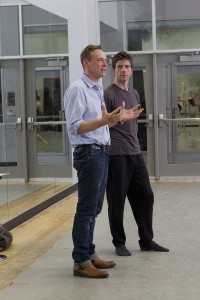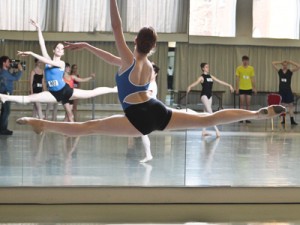by Risa Gary Kaplowitz
A few days ago, I asked my students at the first ballet class ever held at The College of New Jersey if any of them had ever seen a ballet before. A few of the females raised their hands. “Which one?” I asked. Three of them said almost in unison, “The Nutcracker.” Then one rolled her eyes and added, “of course.”
I had expected that answer. What other performing arts field has a website devoted entirely to one theatrical story such as the one titled, “Nutcracker Ballet”? The site’s 2011 listing for New Jersey shows at least forty-two productions of Nutcracker. And that doesn’t include productions in the Philadelphia area or in New York City, which are close enough for us Jersyians to easily attend.
The start of the Nut season (as it’s affectionately or not so affectionately called by the dancers who must perform it morning, noon, and night for days on end) is officially upon us. My inbox is filled with “Get Your Nutcracker Seats Now!” pleas, audition announcements, and unsolicited queries from unemployed professional ballet dancers looking to perform in a Nutcracker.
The deluge prompts me to ask a question. With American ballet company directors and boards lamenting the low status of ballet in the minds of the general public, I wonder what would happen if our ballet companies offered more options during the holiday season—the one time of year when both balletomanes and new patrons spend money to see shows. How on earth did we get ourselves trapped in a can of Nuts?
Nutcracker was first performed in Russia in 1892. Based on E. T. A. Hoffmann’s, The Nutcracker and The Mouse King, its premier was not a success. But by the second half of the twentieth century, The Nutcracker had spread from two successful American productions: Willam Christensen’s 1944 production for San Francisco Ballet and George Balanchine’s for New York City Ballet in 1954. Considered the bread and butter of nearly every ballet company, Clara’s journey to the Land of the Sweets brings in the funds to keep ballet companies and their more obscure offerings afloat.
But like real bread and butter, the ballet—of which there are hundreds of versions— is easy to digest but usually offers little substance. Indeed, most audience members leave a Nut performance satiated with enough sugary dancing to last a whole year before needing to see another ballet performance, which is usually The Nutcracker again.
Yet, there have been some interesting versions of late, which may entice their viewers to return to the theater for more ballet sooner rather than later. Septime Weber’s version for The Washington Ballet casts George Washington as the Nutcracker. Those lucky enough to have made it through snow storms to the Brooklyn Academy of Music may have seen Alexei Ratmansky’s magical version for American Ballet Theatre or Mark Morris’ telling of a different part of the original story, The Hard Nut:









